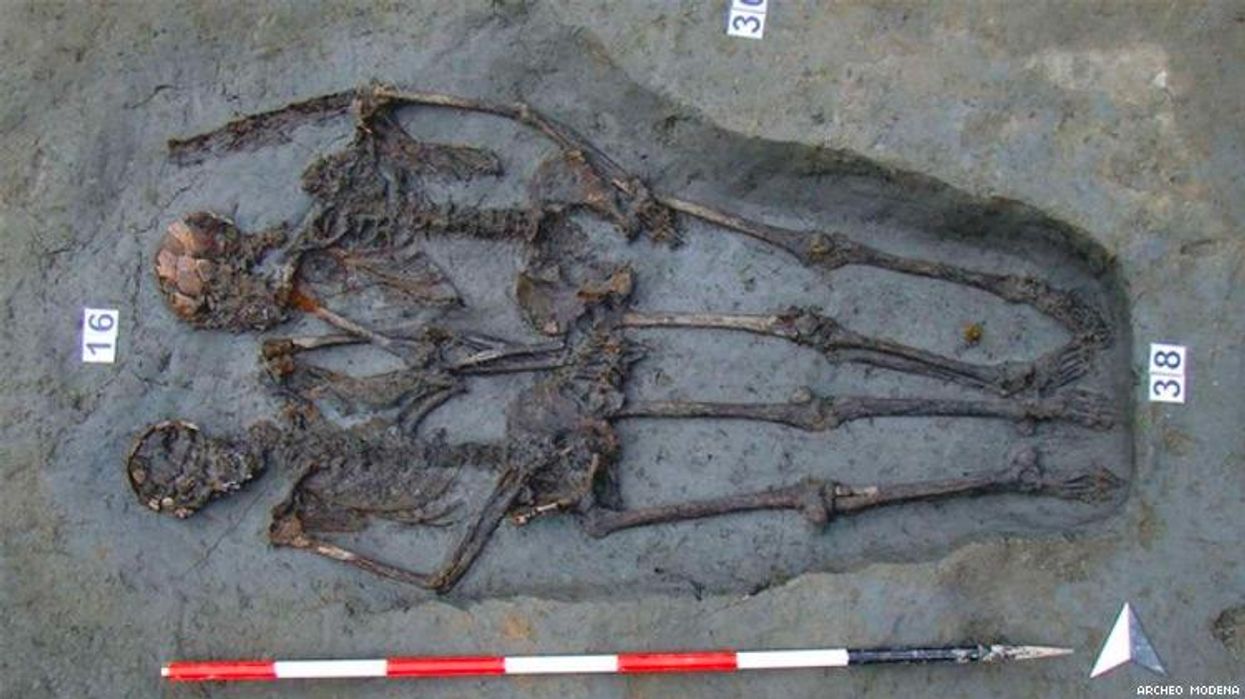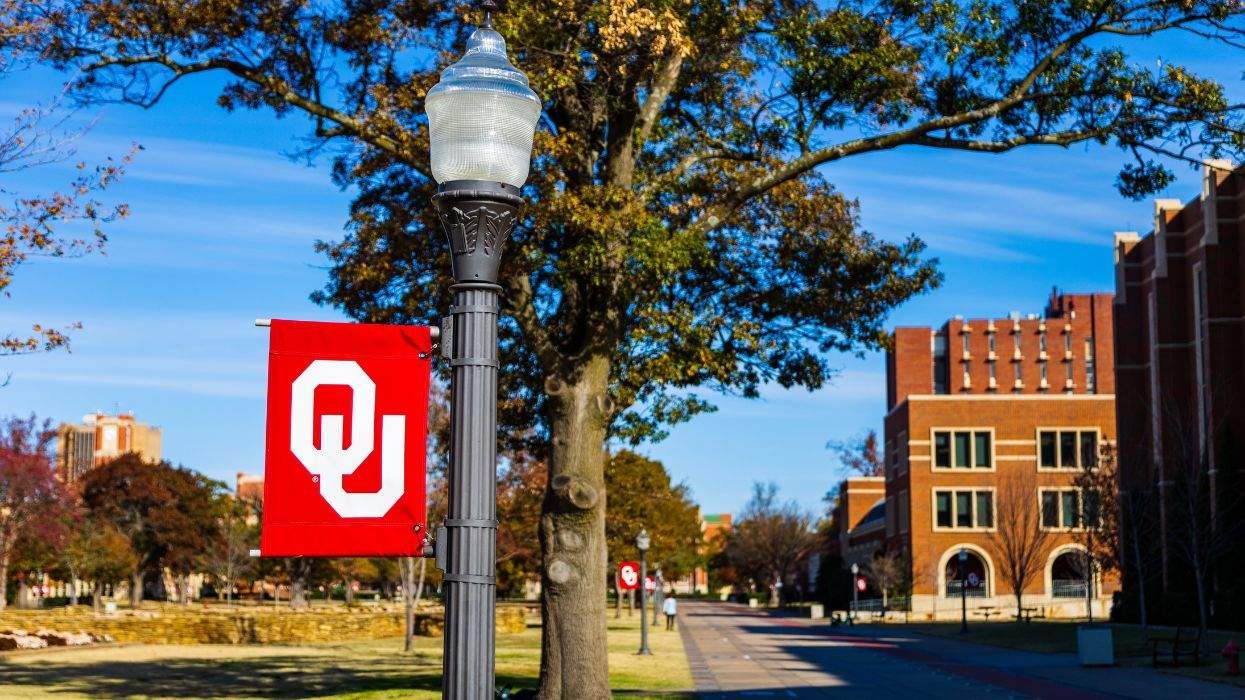A pair of skeletons buried together and referred to as "lovers" are actually two men, challenging long-held assumptions about these and other couples found holding each other.
Discovered in 2009 in Italy, the pair were called "The Lovers of Modena" because they were buried so close, their bodies touching and their hands clasped together.
Their genders could not be definitively identified at the initial time of discovery, due to the deterioration of the burial site. But a new technique that analyzes proteins in teeth finally revealed the truth: They were both men.
But that's where the certainty ends. There's virtually no other information about the pair, although it's possible to make some educated guesses.
For example, there were 11 other bodies buried nearby, most of which showed some sign of injury. That could indicate that this was the site of burials following conflict or war. Dating of the remains indicates that the bodies are probably about 1,400 years old, and the men were probably in their early 20s when they died.
"There are currently no other examples of this type," University of Bologna researcher Federico Lugli, who led the study, told Rai News. "Many tombs have been found in the past with couples holding hands, but in all cases there was a man and a woman. What might have been the bond between the two individuals in the burial in Modena remains a mystery." At least that's what the assumption was.
Research is scant when it comes to same-sex couples buried together around that time. According to the scientists who studied the bodies, similar burials were "uncommon if not totally unrepresented" in art of around the 4th to 6th century.
But there have been other couples found in similar positions from other time periods. There's the "Lovers of Valdaro," who are assumed to be a man and a woman buried about 6,000 years ago in Italy. Two other bodies were found in Greece's Alepotrypa Cave with more couplings in Turkey and Siberia, some as far back as 8,000 years ago. While these have all been presumed to be mixed gender burials, 'Modena" calls this all into question. Referring to all of those assumed-heterosexual pairings, the researchers who studied the Lovers of Modena now they say "a more robust sex determination by enamel proteins or DNA might be necessary to confidently classify the individuals" found in other burial sites.
As for the nature of the relationship between the "Lovers of Modena," it's hard to say. Though we might be tempted to think of them as having been romantically linked, experts say that's unlikely.
"Late Antique social attitudes and Christian religious restrictions lead to the rejection of any hypothesis of deliberate manifestation of homosexual relationship," the study authors write. "In fact, since 390, male passivity was frowned upon by law and, during the reign of Justinian (527-565), sex between males was fully considered a crime."
In other words, the same social taboos under which many people still suffer today would have made it unlikely that two male lovers would be buried together with such a clear expression of affection.






























